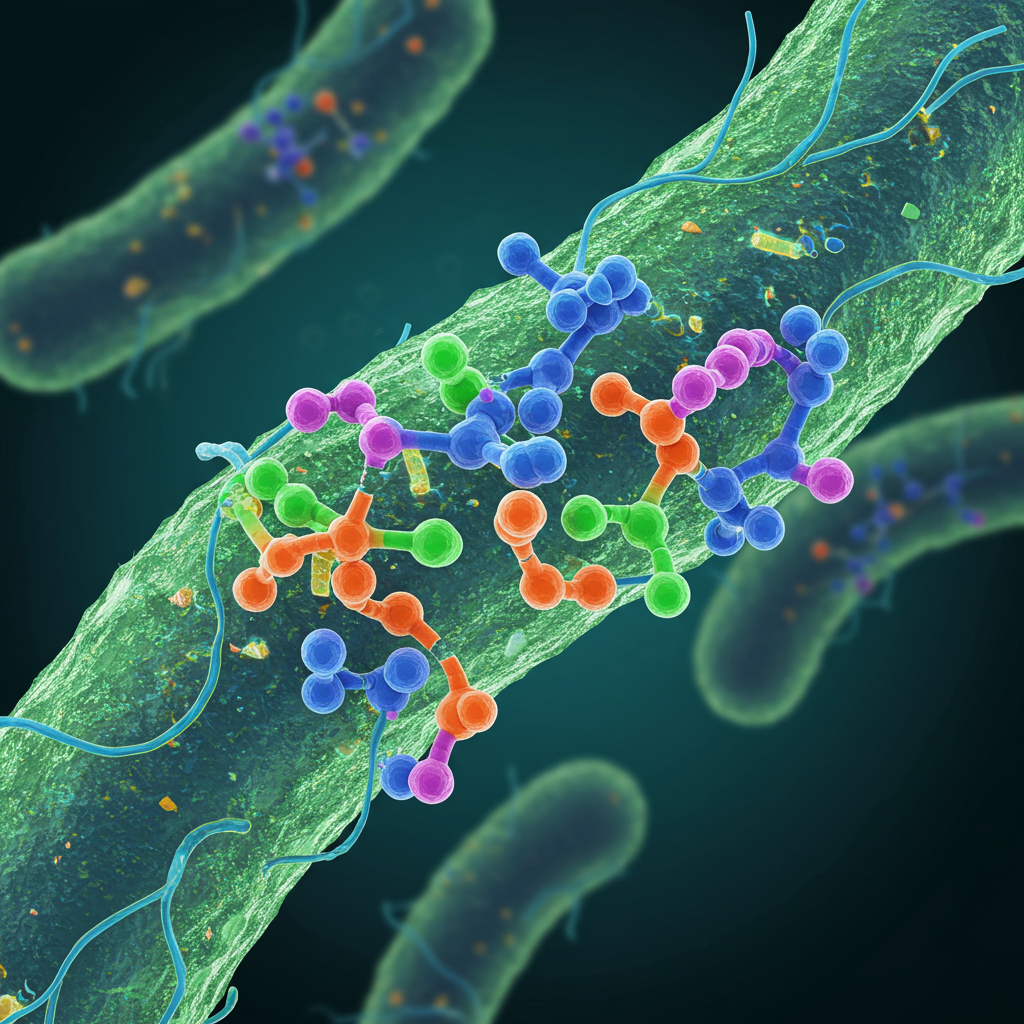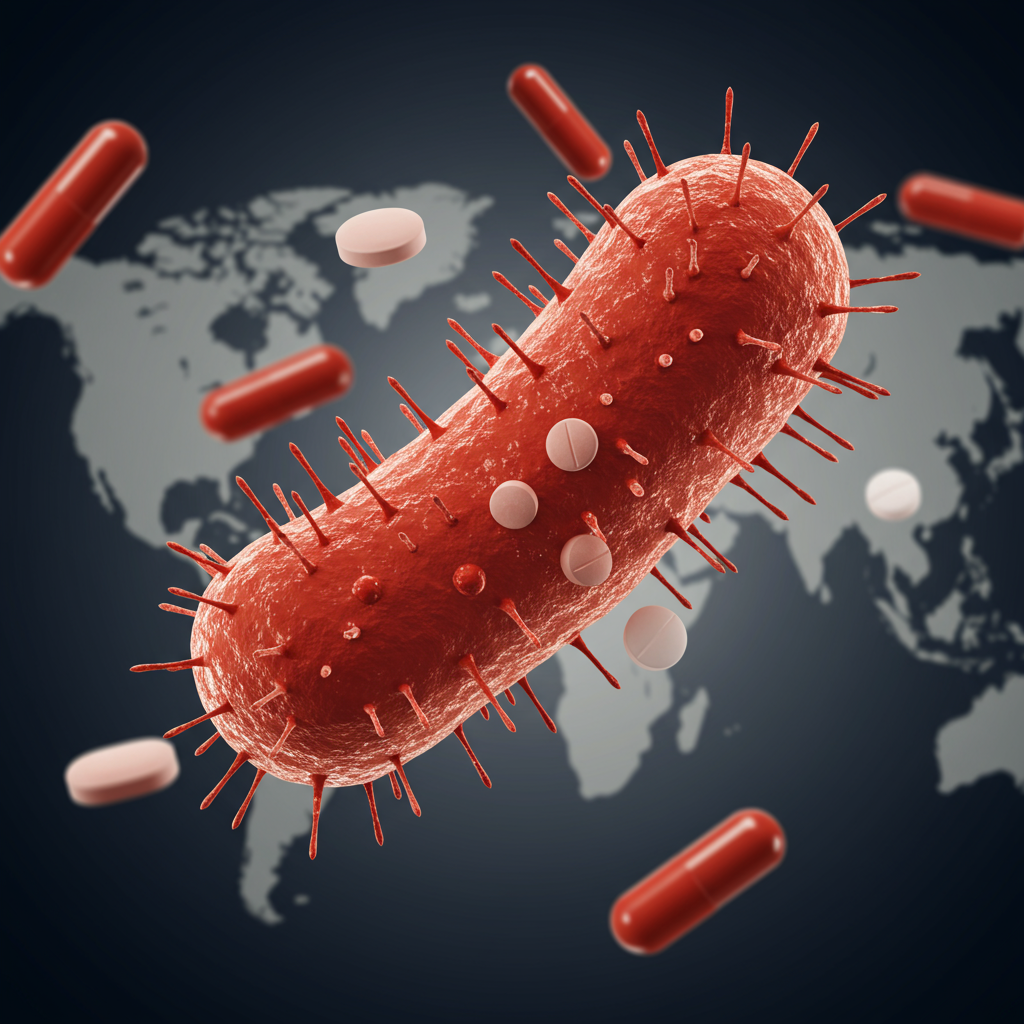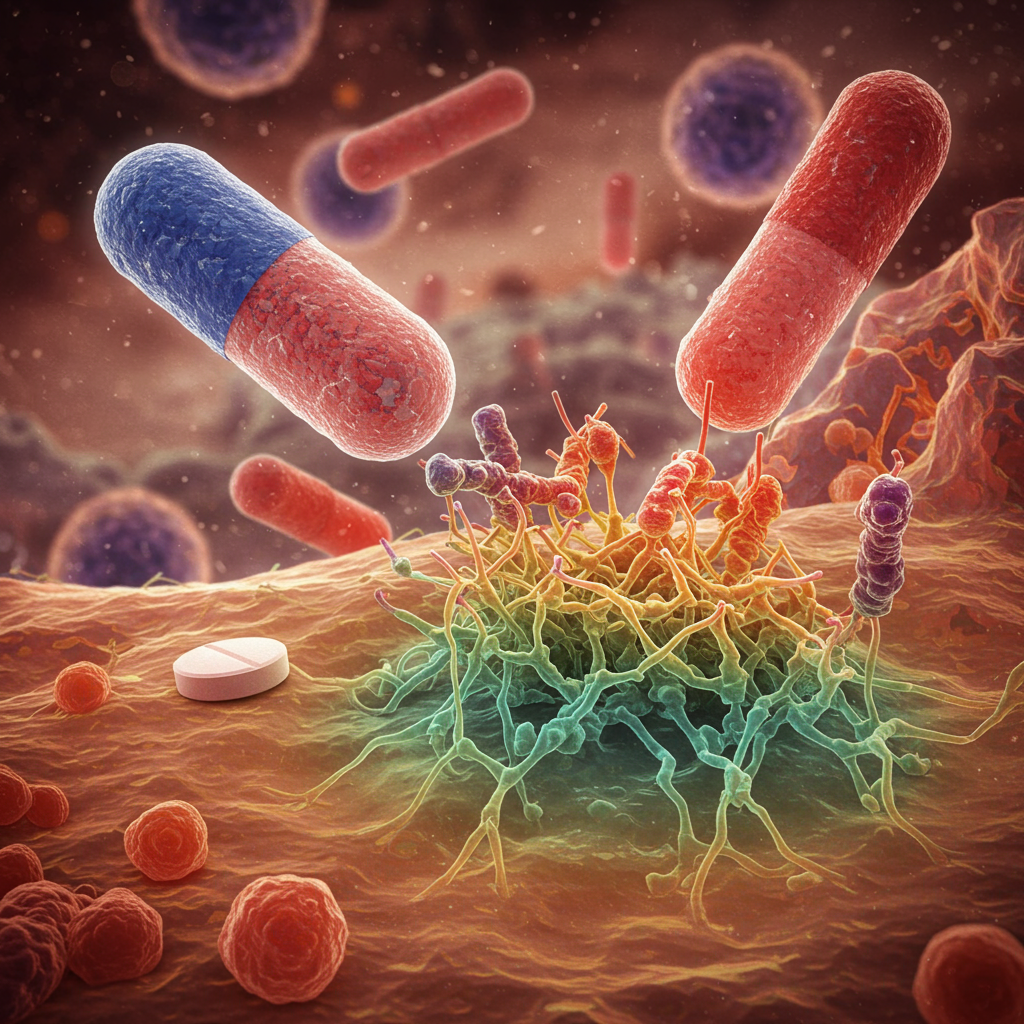Toxic “forever chemicals” known as per- and polyfluoroalkyl substances (PFAS) are widespread environmental pollutants posing serious health risks. Now, groundbreaking research reveals that certain bacteria living in the human gut microbiome possess a remarkable ability: they can rapidly absorb and accumulate these persistent chemicals. This discovery suggests a potential new avenue for helping the body excrete PFAS, offering a glimmer of hope in the fight against these ubiquitous toxins.
The Growing Threat of Forever Chemicals
Manufactured chemicals have permeated the environment to such an extent that some estimates suggest they exceed safe planetary boundaries. Given their widespread presence in water and agriculture, many pollutants inevitably find their way into our food and, subsequently, into our bodies. The gut microbiome, a complex community of trillions of microorganisms living within us, is particularly vulnerable to this chemical exposure. Adverse interactions in the gut can have systemic effects dueously to the microbiota’s critical role in overall health.
Among the most concerning chemicals are PFAS. This vast group includes over 4,700 compounds. They are used in countless industrial and consumer products like nonstick cookware, waterproof clothing, and firefighting foams. Their exceptional stability, thanks to incredibly strong carbon-fluorine bonds, makes them resistant to breakdown, earning them the nickname “forever chemicals.” While this stability is useful in products, it causes major problems in the environment and human health.
Why PFAS Are a Problem
The persistence of PFAS means they accumulate over time. They don’t degrade easily in nature or in the human body. Exposure has been linked to serious health issues. These include reduced fertility, developmental delays in children, increased risks of certain cancers, and cardiovascular disease. Despite their known impacts, effective methods for removing PFAS from the human body are largely lacking. Current legislative efforts focus on limiting new contamination, but don’t address the chemicals already present. Chemical degradation methods are slow and often ineffective for the most problematic PFAS. Ion-exchange resins have shown some effectiveness for body detoxification but come with side effects. The global scale of the problem and the lack of body detoxification solutions are significant concerns.
Gut Bacteria: Unexpected PFAS Accumulators
Previous studies hinted that some environmental bacteria could bind PFAS, but their interaction with bacteria specific to the human gut was unclear. Researchers embarked on a study to investigate how these crucial human-associated microbes interact with food-borne pollutants, including PFAS.
They began by screening synthetic communities of gut bacteria. These communities were exposed to 42 common pollutants found in food. They looked for which pollutants were significantly reduced from the environment by the bacteria. Thirteen pollutants were depleted by over 20% in this initial screen. Further testing on individual bacterial strains, selected for their prevalence in healthy people, narrowed the focus. Seven pollutants were depleted by at least one strain.
Crucially, two specific types of PFAS, perfluorooctanoic acid (PFOA) and perfluorononanoic acid (PFNA), were among those depleted. This depletion wasn’t due to the bacteria destroying the chemicals. Instead, the study revealed the bacteria were actively absorbing and accumulating them within their cells – a process called bioaccumulation.
High Accumulation Capacity Discovered
The research identified nine bacterial species capable of bioaccumulating PFOA and/or PFNA. These were primarily from the Bacteroides and Parabacteroides genera. Depletion rates varied significantly, from 23% up to 74% for PFNA.
A broader screen of 89 microbial strains from major bacterial groups confirmed this varied capacity. They clustered into low-accumulating and high-accumulating categories. High accumulators were mostly Gram-negative bacteria. Low accumulators were predominantly Gram-positive. One strain, Bacteroides uniformis, stood out for its remarkable PFAS accumulation.
Key Traits of Bacterial PFAS Bioaccumulation
The study uncovered several important characteristics of how gut bacteria handle PFAS:
Speed: Accumulation happened rapidly, often within minutes. This is much faster than seen in some environmental bacteria. B. uniformis, for example, began absorbing PFNA in under 3 minutes.
Capacity: The accumulation capacity was remarkably high. B. uniformis achieved estimated intracellular PFNA concentrations of 5–10 millimolar at high external exposure levels. Even at low, environmentally relevant concentrations (0.34 nM), B. uniformis accumulated 37% of the PFNA, concentrating it 50-fold inside the bacterial pellet.
Persistence: Once absorbed, the PFAS remained locked inside the bacteria. PFNA stayed accumulated in B. uniformis for up to 7 days with minimal release.
Concentration and Size Dependence: The fraction of PFAS absorbed by B. uniformis stayed consistent across a wide range of external concentrations (from very low to very high). Furthermore, accumulation increased with the size (chain length) of the PFAS molecule. Longer-chain PFAS like PFDA (10 carbons) and those with more than 10 carbons were accumulated much more effectively than shorter ones like PFHpA (7 carbons).
Tolerance: Despite soaking up significant amounts of PFAS, many abundant gut bacteria, including B. uniformis, continued to grow normally. This indicates they can tolerate high internal PFAS concentrations.
Unpacking the Mechanism
Understanding how bacteria accumulate PFAS is crucial. The research explored the mechanisms involved. While some passive accumulation likely occurs (perhaps interacting with cell lipids), active processes also play a role.
Experiments with Escherichia coli provided key insights. Wild-type E. coli accumulated less PFAS than the high-accumulating species. However, E. coli strains engineered to lack the TolC efflux pump showed dramatically increased PFNA and PFDA accumulation. Efflux pumps are bacterial proteins that actively transport substances out of the cell. The increased accumulation in the mutant lacking TolC suggests this pump actively exports PFAS in wild-type E. coli, limiting internal build-up. This points to active transmembrane transport systems being involved in regulating intracellular PFAS levels.
Confirmation of intracellular localization came from advanced imaging techniques. Using cryogenic focused ion beam secondary-ion mass spectrometry (FIB-SIMS), researchers visualized PFNA inside E. coli* cells lacking the efflux pump. The images showed that the accumulated PFAS molecules didn’t just scatter throughout the cell. Instead, they tended to gather in dense clusters within the cytoplasm. This intracellular clumping appears to be a key survival strategy. It may protect the bacteria from potential toxicity by sequestering the chemicals. Proteomic and metabolomic analyses of bacteria exposed to PFAS also suggested that while overall impact was limited, changes occurred in stress response and membrane proteins, consistent with managing chemical stress.
Evidence from the Gut: Mouse Studies
Translating laboratory findings to a living system is vital. Researchers used gnotobiotic mouse models, which are germ-free and can be colonized with specific bacteria, to test the in vivo relevance. Mice were colonized with a community of 20 human gut bacterial strains known to accumulate PFAS. These mice showed significantly higher levels of PFNA in their excreted faeces compared to control mice that were germ-free.
Further experiments compared mice colonized with high-accumulating bacterial species versus those with low-accumulating species. The mice with high accumulators excreted more PFNA in their faeces, even when normalizing for the amount of bacterial biomass present. These results strongly support the idea that the ability of gut bacteria to bioaccumulate PFAS contributes directly to their excretion from the host’s body.
A Potential Pathway for Detoxification
The discovery that common human gut bacteria can efficiently absorb and facilitate the removal of PFAS is highly significant. Given the widespread exposure and accumulation of these “forever chemicals” in human bodies, finding ways to reduce the body burden is an urgent public health need.
This research provides the first evidence that the gut microbiome could potentially serve a beneficial role in helping the body expel PFAS. By soaking up the chemicals and remaining tolerant, these bacteria could act like tiny sponges within the gut, binding the PFAS ingested with food or water and facilitating their removal through faeces.
Building on these findings, researchers are exploring therapeutic applications. A startup company, Cambiotics, has been co-founded by the lead scientists to develop probiotic dietary supplements specifically designed to enhance the levels of these beneficial microbes in the gut. The goal is to create a novel method to help people mitigate the health impacts of PFAS exposure by boosting the body’s natural excretion pathways via the gut microbiome. While this research is still in its early stages and needs human trials, it offers a promising new direction.
What You Can Do Now
While probiotic solutions are being developed, individuals can take practical steps to reduce their exposure to PFAS in daily life. Avoid using cookware coated with nonstick surfaces known to contain PFAS. Use effective water filters certified to remove PFAS from drinking water. Be mindful of PFAS presence in food packaging and certain consumer products. Reducing intake is currently the most direct way to lower body burden.
Frequently Asked Questions
What did scientists discover about gut bacteria and PFAS?
Scientists found that certain types of human gut bacteria can absorb and accumulate per- and polyfluoroalkyl substances (PFAS), also known as “forever chemicals.” This process, called bioaccumulation, allows the bacteria to effectively soak up PFAS from their surroundings in the gut. The chemicals are then stored inside the bacterial cells, and when the bacteria are excreted, they take the accumulated PFAS with them, potentially helping the body get rid of these harmful pollutants.
Are there probiotics being developed to remove PFAS?
Yes, based on this research, a startup company called Cambiotics has been formed. The company aims to develop probiotic supplements specifically designed to increase the levels of the gut bacteria species that are highly effective at bioaccumulating PFAS. The goal is to create a potential new therapeutic approach to help the human body excrete these persistent chemicals and reduce their harmful accumulation.
How can I reduce my exposure to PFAS chemicals?
While research into bacterial-based solutions continues, the best way to reduce your PFAS exposure is to limit your intake. This includes avoiding nonstick cookware that may contain PFAS coatings, using water filters specifically certified to remove PFAS from your drinking water, and being aware of PFAS used in food packaging and certain consumer products. Reducing exposure is a key step in lowering the amount of these persistent chemicals that build up in your body.
The discovery of gut bacteria’s ability to sequester PFAS represents a significant step forward. It highlights the complex relationship between our microbiome and environmental pollutants. While more research is needed, particularly in human subjects, these findings open exciting possibilities for developing new strategies to protect human health from the pervasive threat of “forever chemicals.” The future may involve leveraging the power of our own gut microbes for detoxification.



